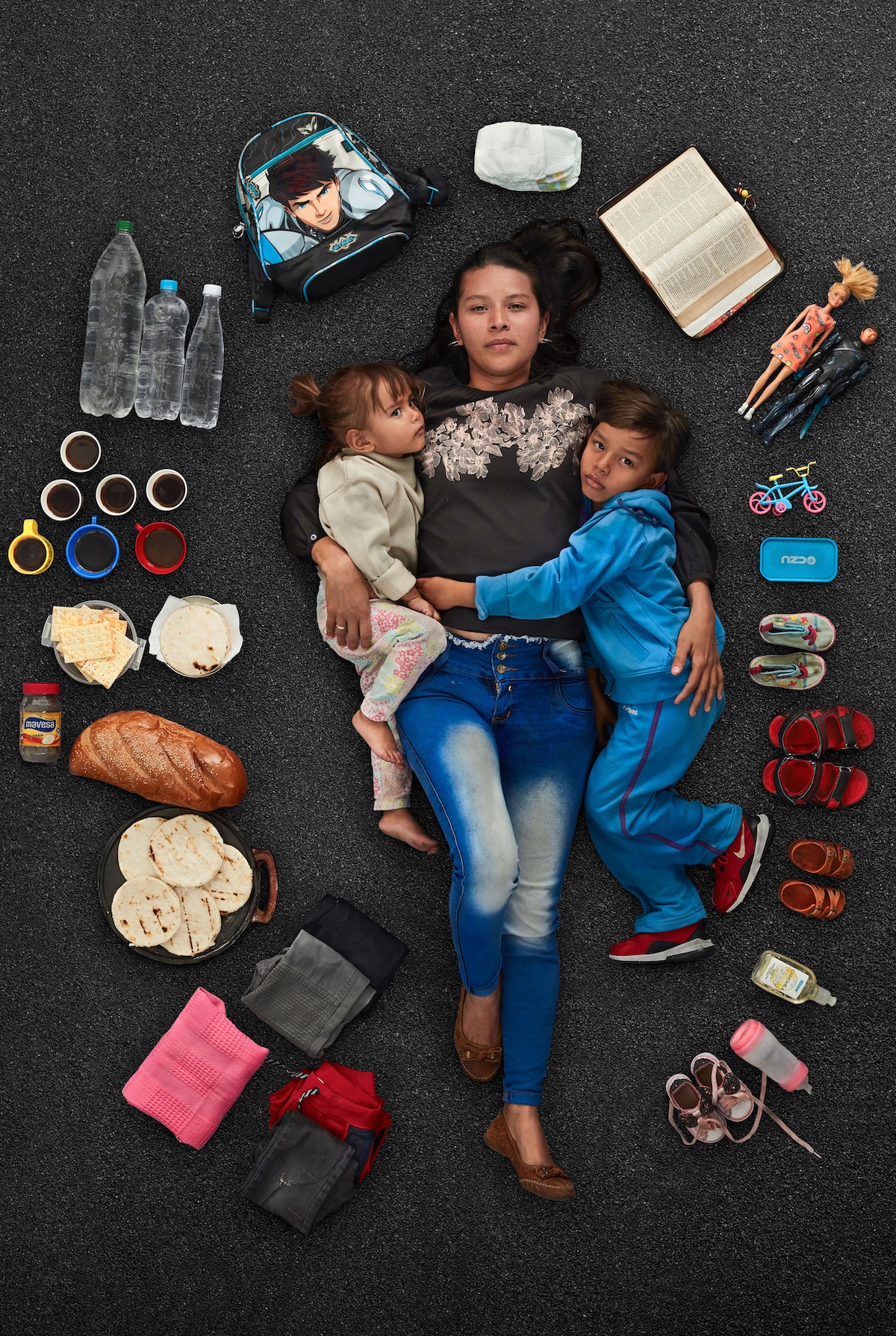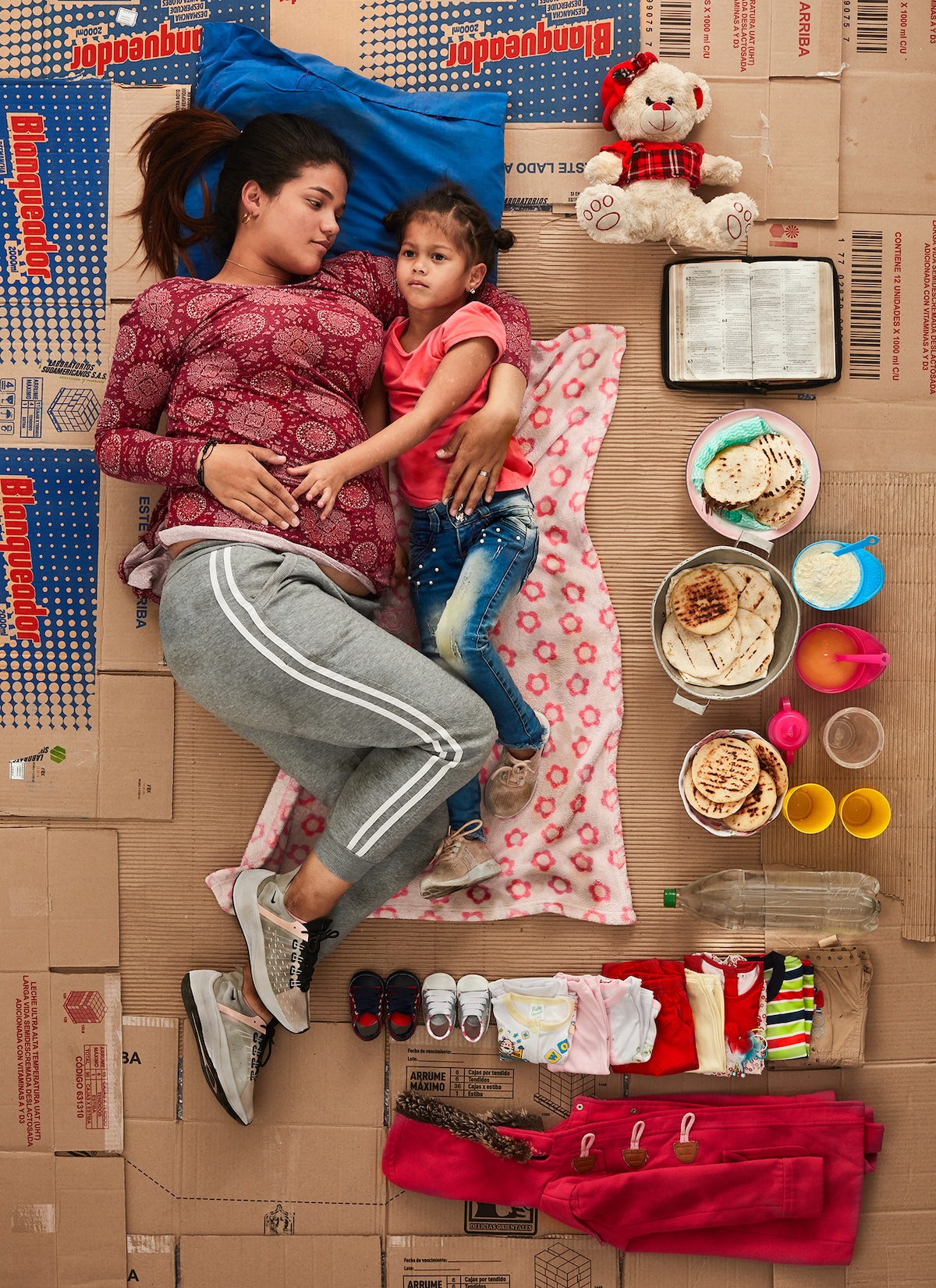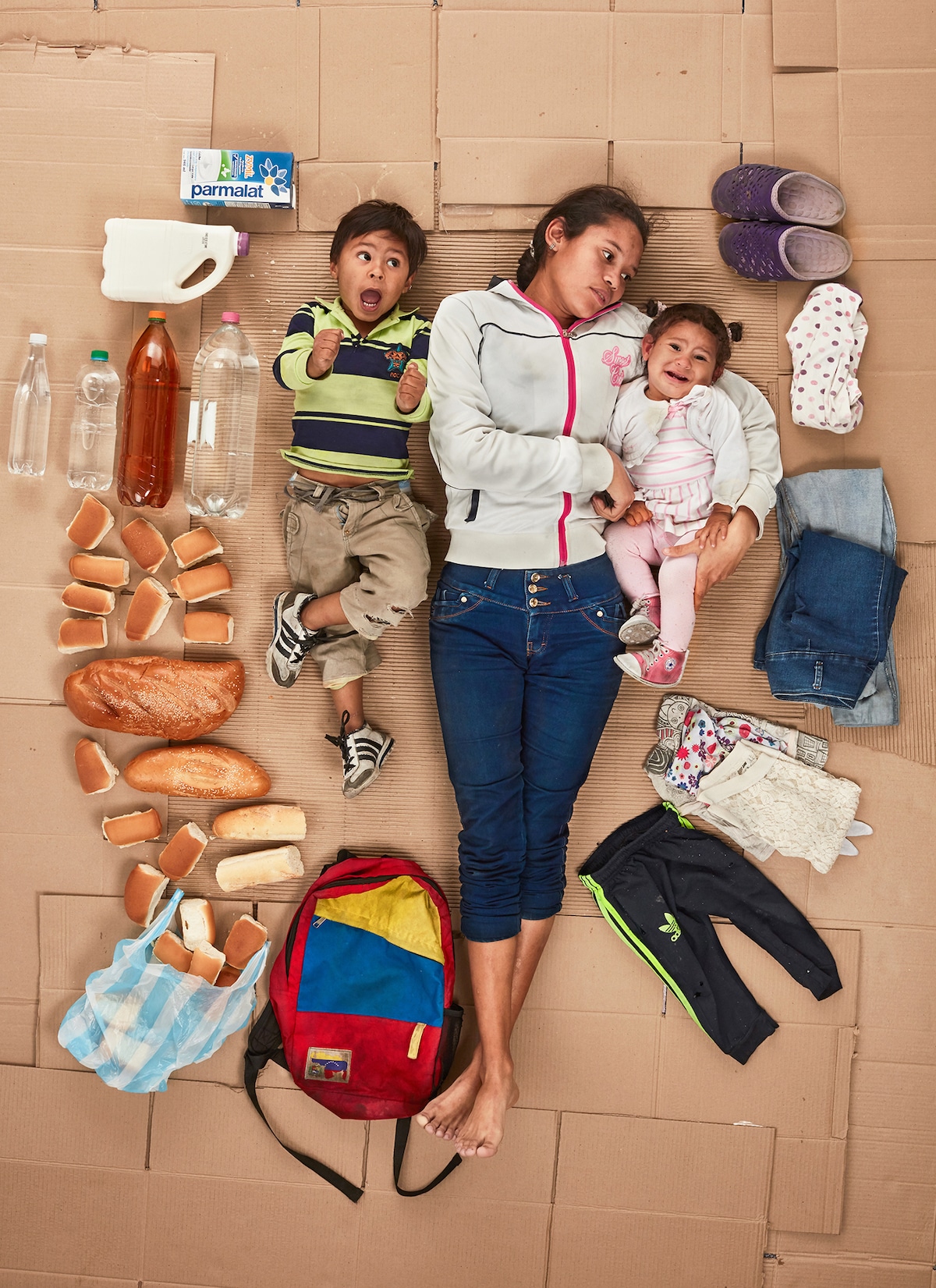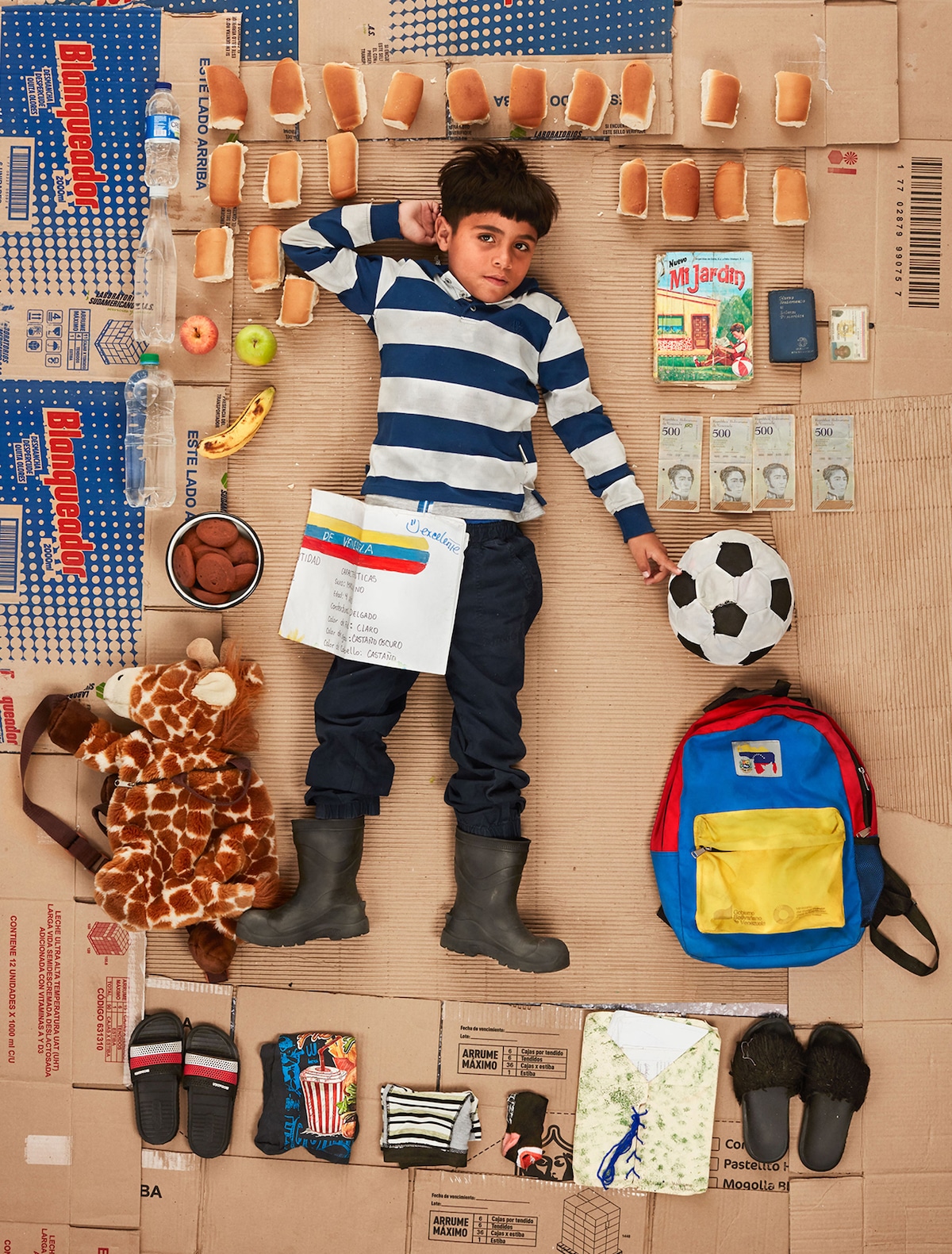Sometimes they were lucky and hitched a ride.
Arianny is determined to provide a more hopeful life for her kids.
With job opportunities scarce, many of these families are struggling to make ends meet.

Arianny Torres packed a few changes of clothes, a couple of toys, medicine, diapers, a baby bottle, photos of relatives and her bible into a small suitcase. With her two young children, Lucas and Aleska, she traveled 606 miles (976 kilometers) from Maracaibo to Bogotá. Sometimes they were lucky and hitched a ride. Other times they caught a bus, cutting into the small amount of money Arianny had put aside for food. Arianny is determined to provide a more hopeful life for her kids. She sells candy in Bolivar Square and though she knows things could be better, at least life is more stable than it was in Venezuela and her kids are able to eat three times a day, which, says Arianny, is a blessing.
Read on for our exclusive interview.
Yosiahanny left Venezuela with her two daughtersone was not photographedand a baby on the way.
Shed prepared a dozen arepas for the road and collected enough money to buy formula for her little ones.

Yosiahanny left Venezuela with her two daughters—one was not photographed—and a baby on the way. She’d prepared a dozen arepas for the road and collected enough money to buy formula for her little ones. She packed a few changes of clothes, her bible, and the teddy bear grandma had given them in farewell. Yosiahanny’s husband had been waiting for them in Bogotá, where he’s been working as a security guard. Despite his job, money is very tight. Their landlady is losing patience with the refugees who rent rooms in her home. Yosiahanny and her family will have to move again soon. Though life in Bogotá is a struggle, Yosiahanny is able to get the medicine and supplies she needs and is able to eat more than once a day. What makes the crisis tolerable is love, she says.
Yosiahannys husband had been waiting for them in Bogota, where hes been working as a security guard.
Despite his job, money is very tight.
Their landlady is losing patience with the refugees who rent rooms in her home.

Nathalia Rodríguez, 9 years old, photographed September 27, 2019 in Bogotá, Columbia. Nathalia walked from Barquisimeto, Venezuela to Bogotá with her mother. They took a few necessities (clothes, blankets, a book of Biblical stories). During the seven day journey, Nathalia ate only bread, cookies, arepas, packaged chips, water, juice, two lollipops, and the one fruit they could afford, bananas. It’s been three years since Nathalia ate an apple because a single apple costs more than 5,000 Bolivas, about $500 US. Nathalia is a resilient kid, but without basic necessities like nutrition and health care, her future is in doubt. This portrait was shot in collaboration with ACNUR, the United Nations refugee agency, to help raise awareness about the plight of refugees and to raise funds necessary to provide mothers and their children with check-ups and other basic medical care.
Yosiahanny and her family will have to move again soon.
What makes the crisis tolerable is love, she says.
How did the concept forUndaily Breadcome about?

Michell, 19 years old and a single mother, made the trip from Venezuela with her two young children not once, but twice. The first time she arrived, she was sent back to her country. Determined to find a better life for her kids, Michell made a second attempt. While on the road, she had an epileptic attack and lost consciousness. It took Michell and her kids 16 days to reach Bogota this time. Michell’s life in Bogota is far from secure. She makes a meager income selling newspapers at the TransMilenio, though not enough to cover the cost of her medication. In this photo, Michell’s son is pretending to be a bus driver. His carefree energy sharply contrasts his mom’s concern and worry, as she glances at her squalling, inconsolable baby. Michell’s meager possessions and food tell the story of how hard life is for her family. After our photoshoot, Michell’s son carried two loaves of bread around the studio, not wanting to give them up, not wanting to feel hunger again.
I was contacted by Jose Racioppi, a copywriter atPublicisin Bogota.
How did the partnership with UNHCR develop and how did they help you move forward with the project?
Nathalia Rodriguez, 9 years old, photographed September 27, 2019 in Bogota, Columbia.

Yudith and her son Williams, 7 years old, fled Venezuela and walked more than 620 miles (1,000 kilometers) to reach Colombia. Yudith fled alone with her youngest child, leaving behind her adult sons because she felt it was the only way to give Williams a chance in life. When I met Williams, he showed me his tattered backpack. In it, he carried a few things from home including the last homework assignment from his old school, something he was proud of. On the long walk from Venezuela, Williams and his mom ate only bread, a few pieces of fruit, and drank only water.
Nathalia walked from Barquisimeto, Venezuela to Bogota with her mother.
They took a few necessities (clothes, blankets, a book of Biblical stories).
How did working on this series challenge your preconceived notions of what these families go through?
I think the process supported what I knew about the plight of the refugees.
Id heard about the collapse of the Venezuelan economy.
With inflation spiraling out of control, money in Venezuela is virtually worthless.
A single apple cost more than 5,000 Boliviasabout $12.
The first time she arrived, she was sent back to her country.
Determined to find a better life for her kids, Michell made a second attempt.
While on the road, she had an epileptic attack and lost consciousness.
It took Michell and her kids 16 days to reach Bogota this time.
Michells life in Bogota is far from secure.
In this photo, Michells son is pretending to be a bus driver.
Michells meager possessions and food tell the story of how hard life is for her family.
How did this experience contrast or compare to working onDaily Bread?
It was important to underscore how little refugees are able to keep from their lives in Venezuela.
Why do you think it’s important for artists to become involved with social issues?
I think artists can help us feel and can ignite compassion with their work.
Images connect with audiences on a gut level.
We live in a visual age and pictures convey social problems with immediacy.
The old adage that a picture is worth a thousand words has never been truer.
When I met Williams, he showed me his tattered backpack.
Is there any family in particular that stuck with you?
What do you hope that people take away from the series?
When we look at photographs we often see ourselves in others.
It is one of the most vital capacities a human being can haveempathy.